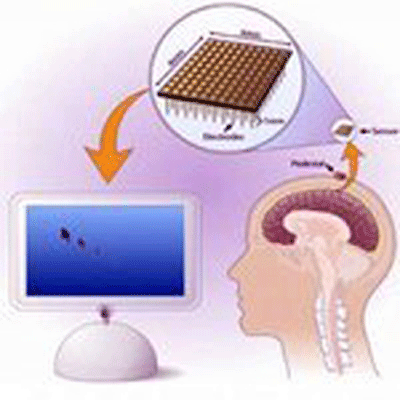Brain waves and neurorehabilitation
12-November-2010
Brain waves and neurorehabilitation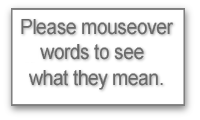
People get the wrong idea about engineering because there aren't enough words for it in the English language, says Aleksandra Vuckovic. "In this country if you talk about engineering, people think about something you do with dirty hands. Or that you can fix their TVs or washing machines.
"In Serbia, where I come from, it is a more highly respected profession. The best students go into engineering or medicine.
"I believe it has to do with language. Serbian has loads of different words for engineer. So you can tell a person's qualifications right away when you hear the word that applies to them."
The confusion in this country means it's not easy for university engineering departments to help schools understand what engineers do, says Dr Vuckovic. "That is part of my job. 
"University lecturers have a mix of teaching and research duties, as well as administration. So I am publicity officer for schoolchildren who might want to study mechanical engineering at Glasgow University."
Aleksandra Vuckovic
The research part of her job is a little more complicated, she says.
"We are developing devices and techniques to help people who have problems with moving or feeling their bodies. We work closely with the spinal injury unit at the Southern General Hospital."
The focus of Dr Vuckovic's research is the brain-computer interface. "We study tiny signals from people's brains and try to work out what they are thinking. Then we use those signals as commands for a computer."
An electrical signal can then be sent from the computer to a specific muscle in a person's body to make it contract. Or the computer could send a signal to a mechanical device, such as an artificial hand or a wheelchair.
One of the hardest parts of all this is the first step - recognising what the faint signals from the brain actually mean.
What they mean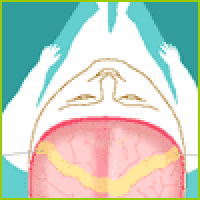
Dr Vuckovic and her team are detecting brain waves by attaching electrodes to the outside of the skull, without penetrating it.
This means the signals are very faint and often mixed up with electrical noise. "Generally in Europe we don't usually put electrodes straight into the brain. So there is a thick layer of all sorts of things between the brain activity and the electrode.
"That means the signals are very tiny. They are measured in microvolts - millionths of a volt."
So these tiny signals have to be amplified before any useful work can be done on them. But amplification makes the noise greater as well as the signal. "So then it's really tricky to tell what is signal and what is noise," she explains.
If you can separate these, the next part is not quite so tricky - figuring out from those stray signals at the scalp what part of the body the actual signals from the brain were trying to get to.
Homunculi
Scientists have had maps of brain-body connections for some time. These are often shown as homunculi - strange-looking figures with body parts in proportion to the size of the bit of your brain that connects to it.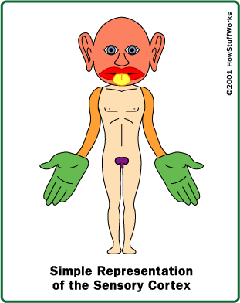
Hands, feet and face are huge in these homunculi, because signals are constantly travelling between these parts of our bodies and our brains. The rest of our bodies are tiny in comparison.
"We call it the somatotopic representation of the body," says Dr Vuckovic, pulling out a diagram of the brain. "Like here in the middle of the cortex we have both legs. On the left side we have the right arm. On the right side the left arm. A bit lower it's the left part of my face. And so on.
"My tongue and mouth communicate with a large part of my brain. So do my fingers. But my body and legs are very small."
What this means is that working out where in the brain a signal came from can tell the engineers which part of the body it's sending a message to.
Plastic brain
So what are Dr Vuckovic and her team trying to do? Well people who lose the ability to move their hands, because of spinal injury, need to work hard to get it back again. If they leave it longer than a few months the parts of the brain that once controlled the unused muscles start doing other jobs.
"It's called brain plasticity," Dr Vuckovic says. "It is very useful when you're learning a new skill, such as playing the piano. But we are dealing with disuse plasticity, which is a problem."
So the aim is to create a device that prevents this by allowing patients to practise using their brains, even before their hands can 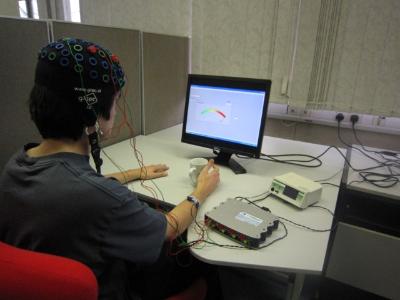 move again. "When you think of moving a part of your body you get similar signals to when you actually move it," she explains.
move again. "When you think of moving a part of your body you get similar signals to when you actually move it," she explains.
So the patient is fitted with an EEG cap of electrodes and then tries to imagine opening his or her hand. The computer works out where the brain waves are coming from. So it knows which part of the body they should be going to.
It then sends a signal to electrodes attached to the correct part - in this case the wrist. That then stimulates the muscles to move the hand.
"We have tested this system with healthy people and it works well," says Dr Vuckovic. "They learn very quickly how they have to think to make it happen. We now need to find out if it will work with people who have real injuries. That is what we are beginning to test.
"I expect it will take them longer to learn. But how long? We will soon find out."
In September 2010 the University of Glasgow launched the first undergraduate biomedical engineering course in Scotland.
.More help with words
| adapt | application | attract | cell | complex | electric charge | charged |
| conductor | design | electric | electron | elementary | magnetic | membrane |
| particle | protein | proton | protoplasm | repel | structure |
For other websites and resources relevant to this science story try the


